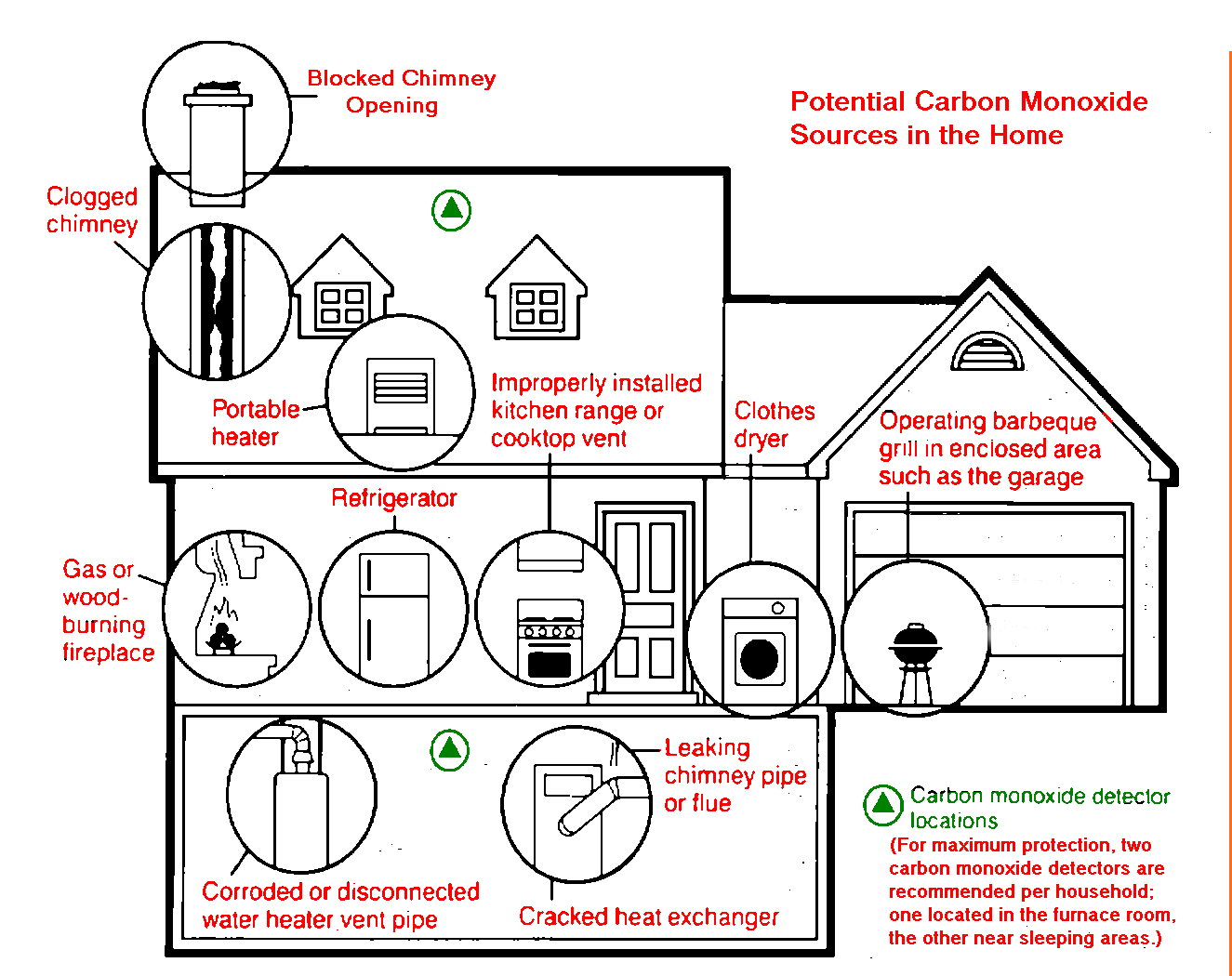Carbon Monoxide
Questions & Answers about Carbon Monoxide Poisoning.
How early warning can help save your life.
What is carbon monoxide?
Carbon monoxide (CO) is a colorless, odorless, deadly gas. Because you can't see, taste, or smell it, carbon monoxide can kill you before you know it's there. Today's more energy efficient, airtight home designs contribute to the problem by trapping CO-polluted air inside the home.
Why is carbon monoxide so dangerous?
The great danger of carbon monoxide is its attraction to hemoglobin in the bloodstream. CO is breathed in through the lungs, and bonds with hemoglobin in your blood, displacing the oxygen which cells need to function. When CO is present in the air it rapidly accumulates in the blood. It will eventually displace enough oxygen in your system to suffocate you from the inside out, resulting in brain damage or death.
Where does carbon monoxide occur?
A common by-product of appliances that run on flammable fuel, carbon monoxide can be emitted by gas or oil furnaces, refrigerators or clothes dryers, water heaters, fireplaces, wood stoves, charcoal grills, gas ranges, and space heaters. A clogged chimney or improper venting can cause problems as well.
Who is at risk for carbon monoxide poisoning?
Everyone is at risk. Carbon monoxide poisoning can happen to anyone, anytime, anywhere. Experts believe that vulnerability to CO poisoning increases for unborn babies, infants, senior citizens, and people with coronary or respiratory problems. These people are considered to be at greatest risk.
How can I protect myself from carbon monoxide poisoning?
The Consumer Product Safety Commission recommends installing at least one carbon monoxide detector per household. Reliable, cost-effective protection from carbon monoxide poisoning is now available.
How do I know if I'm suffering from carbon monoxide poisoning?
CO poisoning is difficult to diagnose. Because its symptoms are similar to other common diseases, such as the flu, carbon monoxide is often called "The Great Imitator." Symptoms of low level CO poisoning can include headaches, fatigue, nausea, dizzy spells, and confusion. There are, however, a few hints that can help.
To identify carbon monoxide poisoning in your home:
- Are other members of the household feeling ill as well?
- Do you feel better when you are away from the house for a period of time?
If so, you may be suffering from carbon monoxide poisoning. To be sure, see a physician and request a carboxyhemoglobin test. This will determine the percentage of carbon monoxide present in your blood.
What do I do if my carbon monoxide detector goes off?
Get out of the house immediately. Have a plan that includes a pre-designated meeting place so that all family members can be accounted for. (Most fatalities occur when people re-enter the home to search for loved ones). Call the Fire Department from a neighbor's home. Do not re-enter until the Fire Department tells you it is okay to do so. Discuss the source of carbon monoxide with a Fire Official and have it repaired immediately.
Where do I put my carbon monoxide detector?
Near the sleeping area, according to the Consumer Product Safety Commission, which recommends at least one detector per household. A second detector located near the home's heating source adds an extra measure of safety.

What do I look for when purchasing a CO detector?
Look for a detector with the UL seal. The seal guarantees that the product has passed 36 tests in the areas of performance, safety, and accuracy. Other important features include a test button, which tests the entire detector for easy assurance that the system is operating properly.

